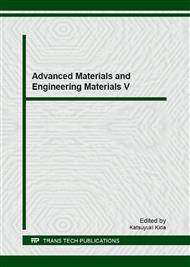p.183
p.187
p.192
p.197
p.202
p.209
p.214
p.219
p.224
Experimental Study on Evolution Process of Short Fatigue Crack in 2A12 Alloy under Complex Stress State
Abstract:
The fatigue behavior of 2A12 Aluminum alloy was experimentally studied through different annular notched specimens under symmetrical triangle with the frequency of 0.5 Hz. The experimental result showed that the microstructure played an important role during the entire fatigue life of 2A12 Aluminum alloy. The short fatigue crack only initiated due largely to the second-phase particle such as the S phase (Al2CuMg), the θ phase (CuAl2) and especially the black impurity phases debonding from the basal body when the fatigue cycle was sufficient. The cracks propagated separately along the circumferential direction of the notch, crack coalescence and interaction of cracks were not common at early and middle stage of short crack’s fatigue life. Cracks tended to propagate along direction different from the original one after crack coalescence. Surface crack length at early and middle stage of short crack’s fatigue life were presented. These curves showed crack growth rate increased relatively as the reducing of notched radius or the increasing of nominal strain amplitude which implied that geometry and loading conditions were the factors of the crack propagation.
Info:
Periodical:
Pages:
202-206
Citation:
Online since:
August 2016
Authors:
Price:
Сopyright:
© 2016 Trans Tech Publications Ltd. All Rights Reserved
Share:
Citation:


